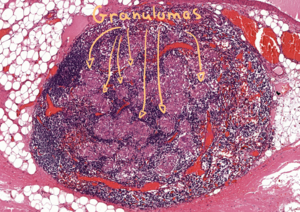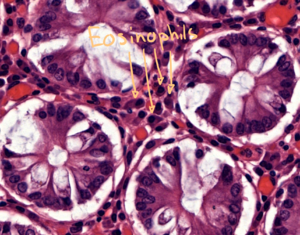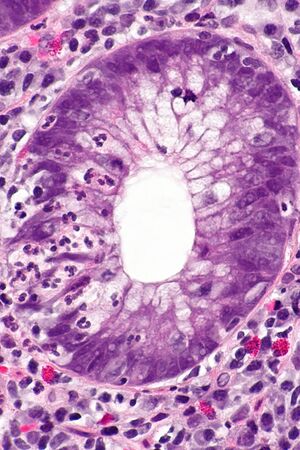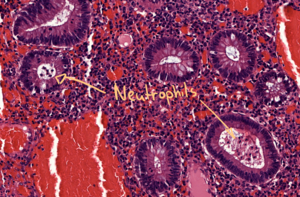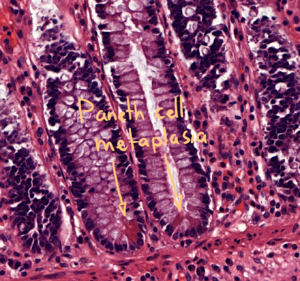4. Crohn’s disease
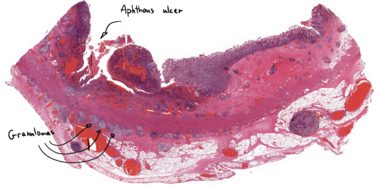
Staining: HE
Organ: Large intestine
Description:
Many histological findings are important in Crohn’s. Not all of them can be found on this slide:
An aphthous ulcer, which is a knifelike deep ulcer, is present.
Non-caseating granulomas are visible throughout the whole thickness of the wall. These contain giant cells.
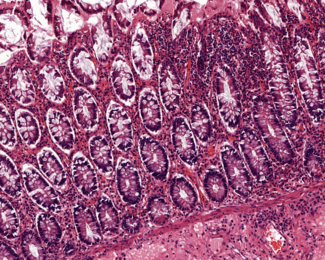
Plasma cells, lymphocytes and eosinophils are abundant throughout the whole thickness of the wall.
Cryptal distortion, where the crypts lose their normal round shape and instead take on an irregular shape is present.
Cryptitis, where neutrophils are present in the walls of the crypts, may be present.
Cryptal abscess, where neutrophils are present in the lumen of the crypts, is present.
Paneth cell metaplasia, where Paneth cells are not normally present (the left colon), is present. If Crohn’s affects a part of the colon where Paneth cells are normally present (the right colon), there will be Paneth cell hyperplasia. Paneth cells have large eosinophilic granules that make their cytoplasm look reddish. Look for reddish parts on the bottom of crypts.
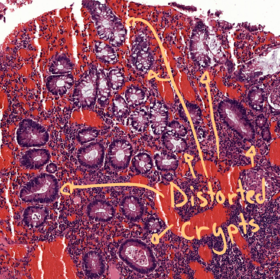
Pseudopyloric metaplasia, where the colonic crypts become more like pyloric glands, is probably not present on the slide.
Diagnosis: Crohn’s disease
Risk factors:
- Western diet
- Genetic factors
Theory:
Granulomas are only found in 40% of cases, so absence of them is not enough to exclude Crohn’s.
The crypts are distorted because they are repeatedly destroyed and regenerated due to inflammation.
